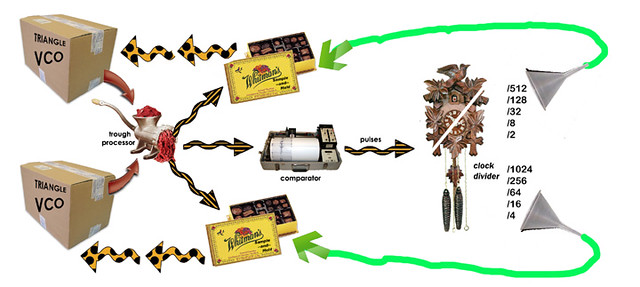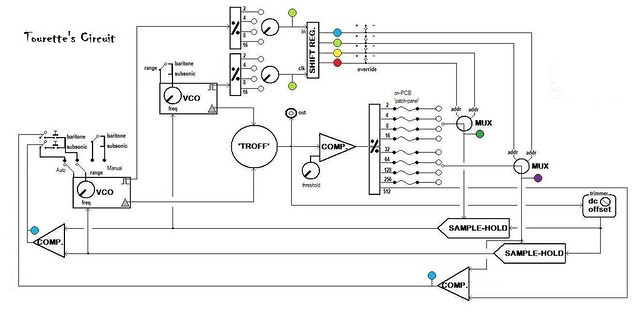The K-Pod
First, about the name…
My daughter was a teenager at the time I built the K-pod and her entire existence centered on a device called an ‘I-Pod’ . I was snarky and scornful of the device , (and rest assured that my daughter was well-equipped by adolescent resentment to respond in kind!) . I made fun of a machine that played the same music every time you pushed the button …and sorry honey…. but a ‘shuffle mode’ doesn’t cut any mustard when compared to 9 interdependent timbral parameters all derived from separate white noise sources! Generational friction aside, her I-Pod started me thinking about the concept of what I would want from a personal source of music.
I love Bebe and Louis Barron. Their soundtrack for ‘Forbidden Planet’ is a masterpiece on many levels. I always loved the scene in which Dr. Morbius demos a sample of Krell music for the visiting crew. With that as a reference I asked myself: “If the Krell built a portable music device, what would it do?” (thus the “K” in “K-pod”)
The K-pod is my not-entirely-facetious answer.
One thing is for certain. A Krell I-Pod would never play the same music twice!
Louis Barron* employed cybernetic concepts in the design of his circuits and so the K-pod circuit is a closed cybernetic loop which begins with a pair of VCO’s. The square-wave outputs are divided and drive a shift register that selects the inputs from a pair of multiplexers which will select the triggers for a pair of sample holds downstream. Meanwhile the two triangle wave outputs are combined by a secret-recipe** audio processor. This resulting waveform is the audio output , AND is fed to a comparator with a user-variable threshold, that feeds a clock divider. This comparator provides the triggers (selected by the aforementioned multiplexors) for two sample holds which select the frequencies of the VCO’s.
The K-Pod is what I consider to be one of my ‘purest’ electroniums because it has no patch points or modularity whatsoever. It has only an output. I generally eschew external effects but in tribute to the echo-chamber reverbs that Bebe & Louis employed, I implemented an analog delay with voltage controlled parameters tapped from various points in the K-pods main-voice circuit.
I shared this circuit with an astute Milwaukee musician named Dan Schierl. Dan built a version, and in the process of doing so designed this very fanciful but accurate block diagram of the cybernetic loop.
…and here is a block diagram with more detail but not nearly as interesting:
* One of Louis Barron’s cybernetic ideas in schematic form appears in this site’s sidebar header-image rotation
** It’s a secret because it contains a design by Grant Richter that he may choose to implement commercially at some point in the future
from → InstrumentsTechnology



Comments are closed.